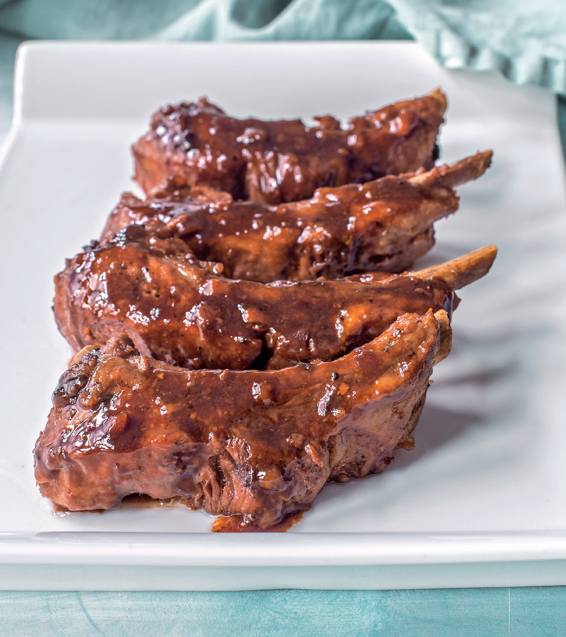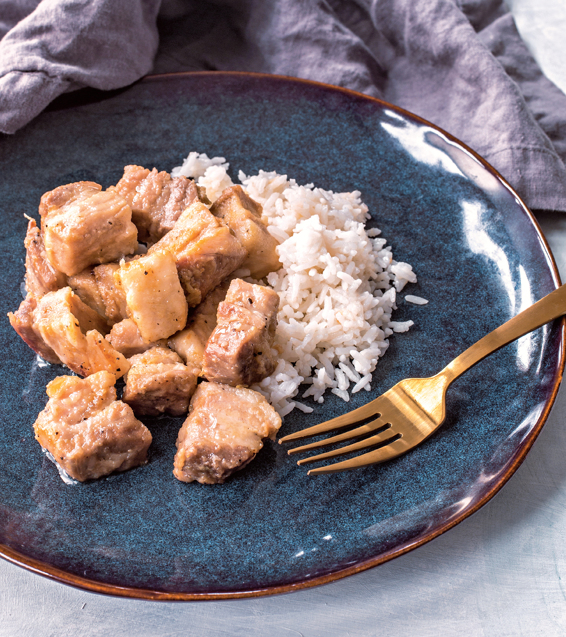Liza Agbanlog - Quintessential Filipino Cooking
Here you can read online Liza Agbanlog - Quintessential Filipino Cooking full text of the book (entire story) in english for free. Download pdf and epub, get meaning, cover and reviews about this ebook. year: 2018, publisher: Page Street Publishing, genre: Home and family. Description of the work, (preface) as well as reviews are available. Best literature library LitArk.com created for fans of good reading and offers a wide selection of genres:
Romance novel
Science fiction
Adventure
Detective
Science
History
Home and family
Prose
Art
Politics
Computer
Non-fiction
Religion
Business
Children
Humor
Choose a favorite category and find really read worthwhile books. Enjoy immersion in the world of imagination, feel the emotions of the characters or learn something new for yourself, make an fascinating discovery.
- Book:Quintessential Filipino Cooking
- Author:
- Publisher:Page Street Publishing
- Genre:
- Year:2018
- Rating:4 / 5
- Favourites:Add to favourites
- Your mark:
- 80
- 1
- 2
- 3
- 4
- 5
Quintessential Filipino Cooking: summary, description and annotation
We offer to read an annotation, description, summary or preface (depends on what the author of the book "Quintessential Filipino Cooking" wrote himself). If you haven't found the necessary information about the book — write in the comments, we will try to find it.
Quintessential Filipino Cooking — read online for free the complete book (whole text) full work
Below is the text of the book, divided by pages. System saving the place of the last page read, allows you to conveniently read the book "Quintessential Filipino Cooking" online for free, without having to search again every time where you left off. Put a bookmark, and you can go to the page where you finished reading at any time.
Font size:
Interval:
Bookmark:


COOKING
 Thank you for buying thisPage Street Publishing Co. ebook. To receive special offers, bonus content, and info on new releases and other great reads, sign up for our newsletters.
Thank you for buying thisPage Street Publishing Co. ebook. To receive special offers, bonus content, and info on new releases and other great reads, sign up for our newsletters.  Or visit us online at us.macmillan.com/newslettersignup The author and publisher have provided this e-book to you for your personal use only. You may not make this e-book publicly available in any way. Copyright infringement is against the law.
Or visit us online at us.macmillan.com/newslettersignup The author and publisher have provided this e-book to you for your personal use only. You may not make this e-book publicly available in any way. Copyright infringement is against the law.

I remember being a young girl and going to the wet market with my older sister, list in hand, to fetch ingredients for my mom to make dinner. While at the market, we would stop and have snacks such as palabok (noodles in special sauce) or banana cue (caramelized fried banana). When we got home, we would help our mom with preparation and watch her cook. Sometimes, when our mom was busy tending to her store, my sisters and I would do the cooking instead. Growing up, my mom would mostly cook dishes from her hometown of Gapan, Nueva Ecija, while my dad would make us dishes influenced by his Chinese heritage. I would look forward to coming home from school and eating my moms sinigang (sour soup) or my dads vegetable and tofu dishes.
Our diet consisted mostly of vegetables and fish. The combination of both my parents cooking styles has been the biggest influence in the way that I cook. When I got married, my cooking style was further influenced by my mother-in-law. She passed down the recipes that my husband enjoyed growing up. Unlike my mothers dishes that used more vegetables, her recipes tended to use more meat. I am thankful for her expertise because it has broadened my culinary knowledge.
When my family immigrated to Canada, I was suddenly overwhelmed with the necessity to cook for my family. In the Philippines, I was able to rely on my extended family for help in cooking, and taking care of my kids, but in Canada, I was on my own. Cooking Filipino food in Canada was especially challenging at first because some of the ingredients were not easy to find. We had to rely on ourselves and the Filipino community to adapt to change based on which ingredients were available. By combining my existing knowledge with what I learned, I was able to successfully re-create some of my favorite dishes. I started my blog in June 2012 and it has been a challenging, but fulfilling, experience.
Since then, the blog has surpassed what I had initially set out to do. It started as a way to archive the many recipes and cooking styles I had accumulated over my lifetime. I wanted it to be easy to access and wanted to share it with both my family and friends, and other people. I thought that a blog would be the perfect way to capture all of these things. As the blog grew, I was surprised with how many people found it and were willing to share their experiences, too. One thing I didnt anticipate was how many different recipes Id get to try while experimenting for the blog.
As a humble mother and wife, I never thought I would have my own blog or even my own book. But throughout all the experiences I had growing up and starting my blog, I discovered that I was able to make all the dishes I grew up eating. I wanted to make this book so I could share my recipes with people in a new way, and maybe help others make the Filipino dishes they too grew up eating once upon a time.

As is typical in Filipino cooking, no part of the pig goes unused. For example, parts of the head and liver are used to make sisig (chopped pork with onion and lemon), while the blood is used to make dinuguan (pork blood stew). Other parts of the pig, such as the heart, intestines and kidneys, are also used in Filipino dishes. Although not as popular as chicken and pork, there are still some dishes in Filipino cooking where beef is the focal point of the dish. Examples of these dishes include mechado (beef stew in tomato sauce), bistek (beef steak) and kare-kare (oxtail stew in peanut sauce).

I recommend using pork back ribs since they take on the adobo flavor well and will give you more flavorful ribs. Although using pork ribs in this adobo recipe puts a different spin on the Filipino classic, it still uses the simplest approach of cooking adobo. All of the ingredients are combined in the pan and simmered until tenderit doesnt get any easier than that! YIELD: 4 TO 6 SERVINGS3 lb (1.3 kg) pork back ribs, cut into individual rib segmentscup (180 ml) white vinegarcup (120 ml) soy sauce6 cloves garlic, crushed2 bay leavestsp freshly ground black pepper1 cup (240 ml) water, plus more as needed Combine the pork, vinegar, soy sauce, garlic, bay leaves, pepper and water in a heavy pan and bring to a boil over medium-high heat. Reduce the heat to medium, cover and simmer until the pork is tender, about 1 hour. Stir occasionally and add cup (120 ml) of water each time as needed, making sure the ribs are covered in the sauce. Uncover the pan and reduce the liquid until it starts to glaze, about 15 to 20 minutes.
Remove the bay leaves. Transfer the ribs onto a serving plate. Pour the sauce over the ribs and serve.

Font size:
Interval:
Bookmark:
Similar books «Quintessential Filipino Cooking»
Look at similar books to Quintessential Filipino Cooking. We have selected literature similar in name and meaning in the hope of providing readers with more options to find new, interesting, not yet read works.
Discussion, reviews of the book Quintessential Filipino Cooking and just readers' own opinions. Leave your comments, write what you think about the work, its meaning or the main characters. Specify what exactly you liked and what you didn't like, and why you think so.













